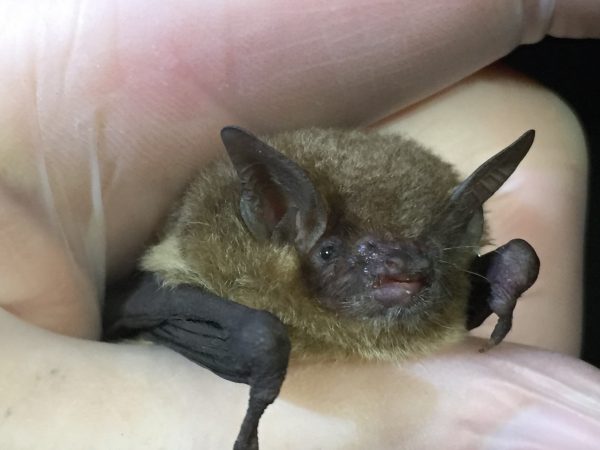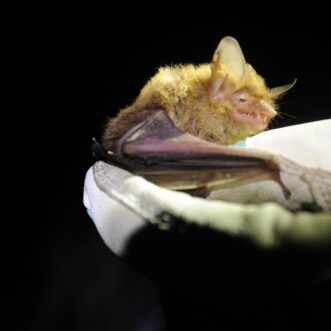On January 28, a federal judge ruled in favor of a lawsuit, Center for Biological Diversity v. Everson, that the U.S. Fish and Wildlife Service’s (USFWS) 2016 threatened listing of the northern long-eared bat (NLEB) does not adequately protect the species under the Endangered Species Act.
Citing best available science, the judge agreed with the challengers—The Center for Biological Diversity, Defenders of Wildlife, Sierra Club, Coal River Mountain Watch, and Ohio Valley Environmental Coalition—that the NLEB instead should be listed as endangered. The court’s ruling states the USFWS failed to consider the cumulative effects of habitat destruction in conjunction with the effects of white-nose syndrome (WNS) and that the limited protections offered by the current listing, threatened with a 4(d) rule, were inadequate to protect the species. This means the USFWS needs to provide more (or updated) best available science to justify its decision of listing the NLEB as threatened (with a 4(d) rule) or if it should be listed as endangered (without a 4(d) rule).

What is White-Nose Syndrome (WNS)?
White-nose syndrome (WNS) occurs when a distinctive fungus, Pseudogymnoascus destructans, colonizes the skin around the muzzles and on the wings of hibernating North American bats. It was first identified from a February 2006 photo (which is not the above photo) taken in a cave located in Schoharie County, New York.
The syndrome has rapidly spread since then, prompting the initial 2016 USFWS threatened listing. Prior to that time, the NLEB was considered common and was not listed as threatened or endangered.
In early 2018, WNS was identified in 33 U.S. states and seven Canadian provinces. By the end of 2018, the disease had reportedly killed millions, resulting in the dramatic decrease of the bat population in the U.S. and Canada.
Most cases are in the eastern half of both countries, but it was confirmed in a little brown bat in the state of Washington in March 2016. In 2019, evidence of the fungus was detected in California for the first time, although no affected bats were found.
No obvious treatment or means of preventing transmission is known at this time, and some species have declined more than 90% within five years of the disease reaching a site.

Why Was the NLEB Listed as Threatened Rather Than Endangered in 2016?
At the time of the 2016 decision, the USFWS had determined that WNS was such an overwhelming threat to the NLEB that an endangered listing’s blanket prohibitions on all forms of take across the expansive 37-state NLEB range (the largest range of any listed species) would not slow the spread and impact of WNS, nor would it benefit the NLEB at the population level. The USFWS wanted to focus on finding a solution to WNS.
Not all species have a 4(d) rule when listed as threatened, although it is a requirement for any new threatened listing. By placing a 4(d) rule on the NLEB in 2016, the USFWS focused on protecting bats when and where they are most vulnerable: at known maternity roost trees during June and July (which is the pup-rearing time frame) and at known hibernation sites.
What Happens Now?
The NLEB will remain listed as threatened until the USFWS finalizes its decision based on new or updated best available science. No time frame or deadline was given on finalizing the decision. If the species is listed as endangered, full protective measures will likely be enforced. For project developers, this would mean a massive increase of potential and occupied bat habitat buffers on the landscape and an increase in surveys and/or conservation efforts.
For more background information on the NLEB, including a species profile and range map, visit the USFWS’s webpage here.
If you have any questions about this news, please contact Ryan Slack (317-613-4505 or rslack@cecinc.com), J.D. Wilhide (615-887-0086 or jwilhide@cecinc.com), or Jackie Rockey (412-249-3140 or jrockey@cecinc.com). CEC will keep you updated regarding the USFWS’s final listing decision.
Related Blog Posts
- USFWS and NMFS Approve Changes to Implementation of Endangered Species Act (October 16, 2019)


Post a Comment